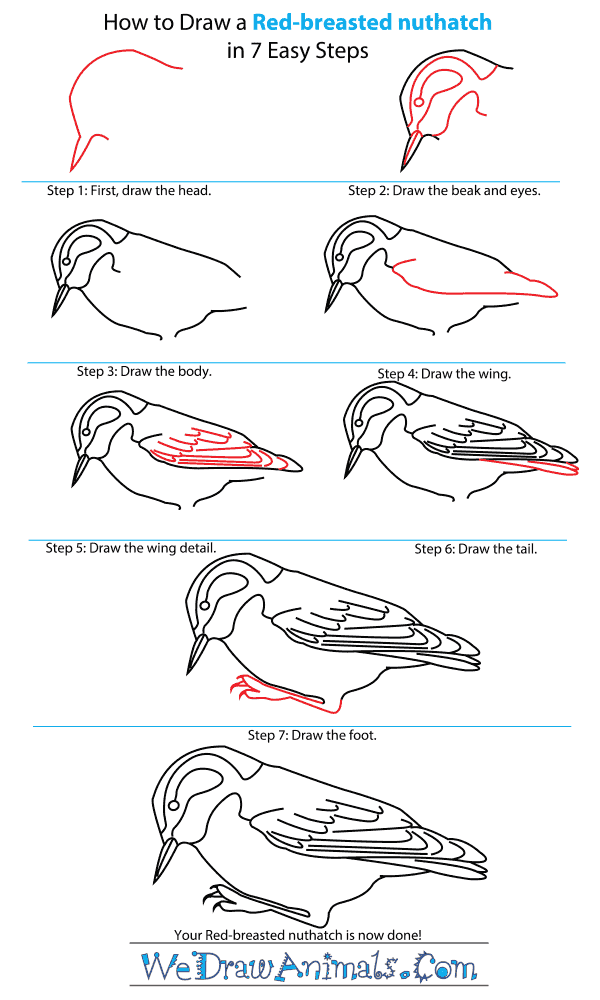In this quick tutorial you'll learn how to draw a Red Breasted Nuthatch in 7 easy steps - great for kids and novice artists.
The images above represent how your finished drawing is going to look and the steps involved.
Below are the individual steps - you can click on each one for a High Resolution printable PDF version.
At the bottom you can read some interesting facts about the Red Breasted Nuthatch.
Make sure you also check out any of the hundreds of drawing tutorials grouped by category.
How to Draw a Red Breasted Nuthatch - Step-by-Step Tutorial
Step 1: Start by drawing the outline of the head and beak
Step 2: Draw the eye by making a small circle and the face pattern by drawing curved lines
Step 3: Draw the body, leaving a space for the leg. Make one line at the top sloping downward from the head and another on the bottom sloping down from the chin. Make a third line between the two, but do not connect them
Step 4: Draw the wing coming from the top line of the body
Step 5: Draw the feathers on the wing by clustering straight and curved lines together
Step 6: Draw the tail under the wing by making two curved lines
Step 7: Draw the leg and foot under the body. The leg and foot stay near the body. Draw small lines coming from each toe to make claws
Interesting Facts about the RED-BREASTED NUTHATCH
The Red-Breasted Nuthatch is a member of the bird family and the scientific term for them is Sitta canadensis. They get their name from males being “Red-Breasted” and their habit of being a “Nuthatch” (hatching a nut by breaking its shell and eating the inside). The word “Sitta” is Greek for Nuthatch and “canadensis” is Latin for Canada. This small songbird lives anywhere from Alaska to Mexico.
Did you know?
- The animal was first documented in 1758.
- This species is almost 5 inches in length.
- They have a wingspan of almost 9 inches wide.
- The bird weighs almost 1/4 of a pound.
- They can make nest over 121 feet high in altitude.
This species is white with a bluish grey back and a horizontal black stripe over their eye. They don’t migrate, but instead focus on finding insects and seeds within their local area. It prefers making homes near evergreen trees, and create the nest in dead wood near the ground, but conceal the opening with sticks. This animal can climb down trees head first, and walk under branches. The species is very versatile, hunting alone or in pairs, and adapting to available food.








